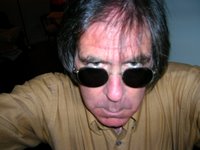January 15
 In 1716, Sir Hans Sloane was created a baronet, making him the first British medical practitioner to receive a hereditary title. Sloane was in the habit of collecting things. He collected so many things that it would not be too far off base to label him a pack rat. Granted, he was a pack rat with a great deal of money and apparently, considering the number of books and manuscripts he managed to collect, one with a great deal of time on his hands. When Sloane died on the January 11, 1753, he bequeathed most of his stuff, amassed over a long career, the manuscripts, pictures, coins and more than 40,000 books that were gathering dust in the attic, to what would become the British Museum, which opened on the 15th in 1759. There was one condition attached to the gift, his estate would have to be paid £20,000, which was far less than the value of the collections. Sloane’s family didn’t seek more money because they were just glad to get all that junk out of the attic. This is a bit like some poets today who are pleased when a university asks to be the repository for their papers because that means that the poet and his wife can finally clean out the attic.
In 1716, Sir Hans Sloane was created a baronet, making him the first British medical practitioner to receive a hereditary title. Sloane was in the habit of collecting things. He collected so many things that it would not be too far off base to label him a pack rat. Granted, he was a pack rat with a great deal of money and apparently, considering the number of books and manuscripts he managed to collect, one with a great deal of time on his hands. When Sloane died on the January 11, 1753, he bequeathed most of his stuff, amassed over a long career, the manuscripts, pictures, coins and more than 40,000 books that were gathering dust in the attic, to what would become the British Museum, which opened on the 15th in 1759. There was one condition attached to the gift, his estate would have to be paid £20,000, which was far less than the value of the collections. Sloane’s family didn’t seek more money because they were just glad to get all that junk out of the attic. This is a bit like some poets today who are pleased when a university asks to be the repository for their papers because that means that the poet and his wife can finally clean out the attic.Sloane has been credited with inventing chocolate milk. The building that houses the British Museum was not the first choice. The site where Buckingham Palace is was the first pick, but it was considered too costly and in a less than desirable location. The Museum’s current home was the residence of Ralph Montagu, 1st Duke of Montagu. By the 18th century however that neighborhood had declined so Montagu’s son, the 2nd Duke of Montagu, bailed out and moved to Whitehall.
King George II gave his formal approval of the Act of Parliament which established the British Museum on June 7, 1753. It took less than six years from the green light to the opening of the museum and related libraries.


0 Comments:
Post a Comment
<< Home